Leupold Golf flies under the radar.
Amidst all the hype of the latest Bushnell products or young rangefinder startups, Leupold has been sitting quietly in the background doing what they’ve been doing for many years:
Making some of the best rangefinders in golf.
They’re a little bit of an enigma to me.
How does a company that makes such a good product seem to stay out of the spotlight?
Occasionally I’ll golf with someone using a Leupold rangefinder, and almost always that person is a good golfer, and someone who just seems, “in the know,” for lack of a better term.
Leupold golf rangefinders may be the best-kept secret in golf.
But if you’ve never heard of them, and you’re just now looking into purchasing a Leupold device, you may be a little overwhelmed.
Right now in 2024, they have 5 different models on the market. And unless you look closely, differentiating between the 5 of them can be a little bit tricky.
In today’s post, I’m going to tell you everything you need to know about Leupold rangefinders and help you decide if 1) a Leupold device is right for you, and 2) if so, which one you should get.
Ready to do this? Let’s go.
Why Makes Leupold Different than Other Rangefinder Companies?
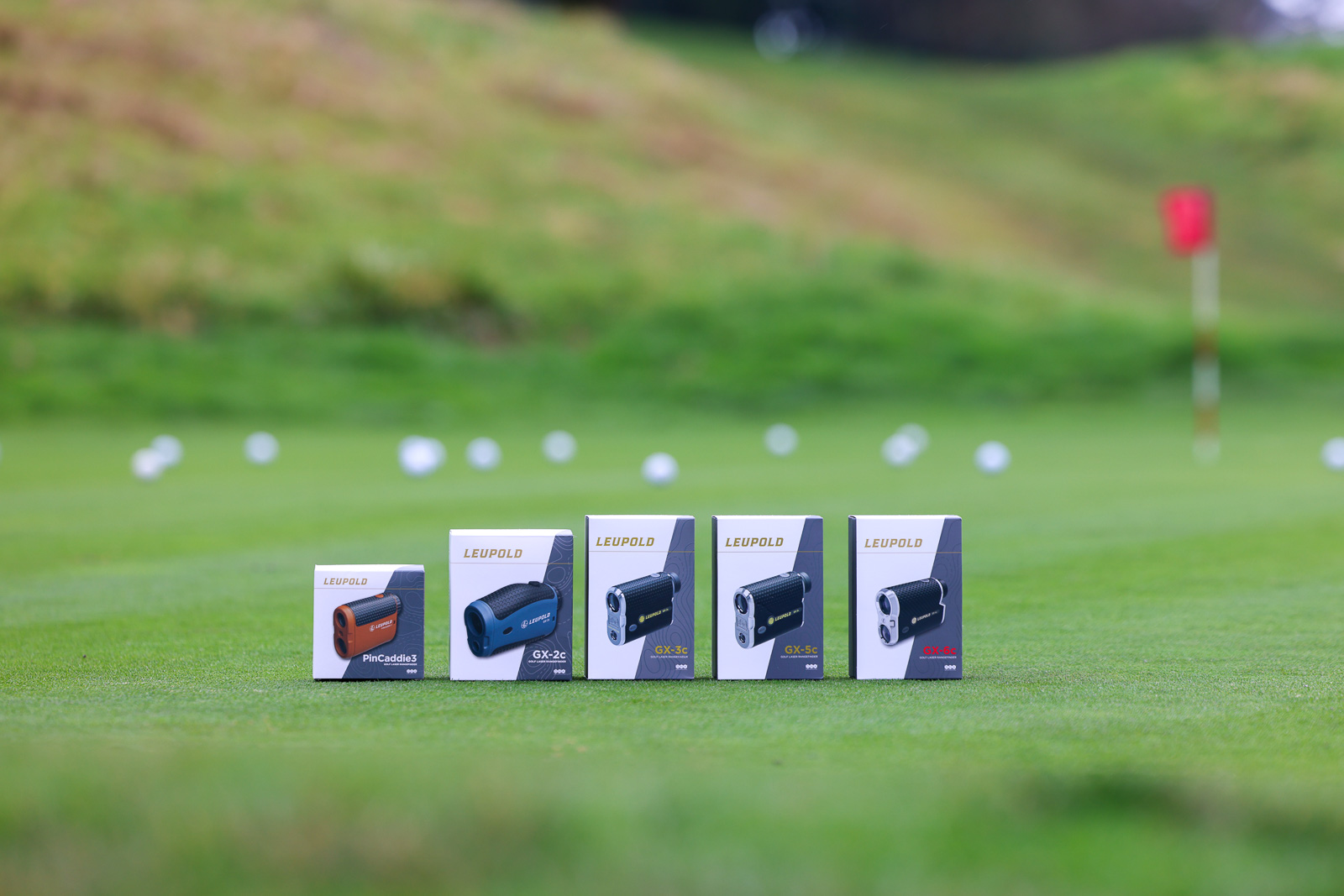
In the golf rangefinder world, I think Leupold is really only rivaled by Bushnell in terms of longevity and their reputation as an optics company.
Leupold has been around for over 100 years and specializes in high-end optics for all kinds of outdoor activities – just like Bushnell.
As such, they have a bunch of proprietary technologies that make their laser golf rangefinders some of the fastest and most accurate in the business.
Most rangefinder companies have their own versions of these technologies. I’ve found Leupold to have really honed theirs in over the years, and their products are among the best in terms of performance and reliability.
Here are some of the ones to keep an eye out for in the models we’ll talk about below:
- True Golf Range Techology (TGR) – This is their version of what other brands simply refer to as “slope”. What makes theirs extra special though is that it takes into account altitude and temperature to give extremely accurate readings. This is typically only found in the most expensive Bushnell models like the
Pro XE and Pro X3, or some GPS Smart Rangefinders. - Fog Mode – This helps the laser essentially cut through the fog or mist and give you more accurate readings. In my experience, this really works and is one of the big selling features for a Leupold device. Especially if you live in the rainy Pacific Northwest like I do.
- Prism Lock – Different brands have different names for this, but this will give you both an audible and visual alert when the rangefinder has successfully locked onto a flagstick with a prism in it (which most have these days).
- Flag Lock – The technology that is similar to Prism lock, but how the devices differentiate between a flagstick and other elements like background trees.
- Digitally Enhance Accuracy (DNA) – DNA devices use digital processing which “picks up less noise than traditional rangefinders”, giving more accurate results down to 1/10th of a yard.
- Scan Mode – This allows you to hold down the range button and scan the device from one target to the next, and easily get multiple yardages quickly.
- PinHunter 3 – This is their laser technology which helps separates things like background trees and helps to eliminate false readings.
- Club Selector – This is a unique feature to some Leupold models which will allow you to customize your distances in the device for certain irons. Then based on the distance and variable items like slope change, altitude, and temperature – will make a club recommendation for you.
- Image Stabilization – The optical lens is actually image stabilized using technology similar to what you’d find in a stabilized camera lens. This makes it extremely easy to lock onto the flag no matter how shaky your hands might be.
What I’ve found with Leupold rangefinders and their approach to building devices is that they’re focusing on accuracy and readings above all else.
Most of their investments in technology and improving their products come in the form of giving more accurate distances through things like TGR, DNA, Fog Mode – and their other proprietary names.
As such, some of the most popular features you see on other more hyped products, you won’t find here. Specifically, no Leupold models have a built-in magnet for attaching to a cart.
You also won’t find any Leupold rangefinders that vibrate when locked onto the flag. They have that same technology (that may actually be the best in the business), but it comes as a visual and audio alert, rather than a vibration.
So that’s an important thing to keep in mind if those are things that are important to you.
But if you place a premium on accuracy, usability, and build quality? Then Leupold will be a great choice for you.
Let’s check out the different models.
Take our 30 second quiz and I'll recommend the perfect golf rangefinder based on your budget, goals, and preferences.
What Are the Leupold Rangefinder Models in 2024?
As I mentioned above, differentiating between Leupold models can be a little bit confusing. So let’s take a quick look at each of them, and then we’ll help you narrow down which one is best for you.
Leupold PinCaddie 3: $199
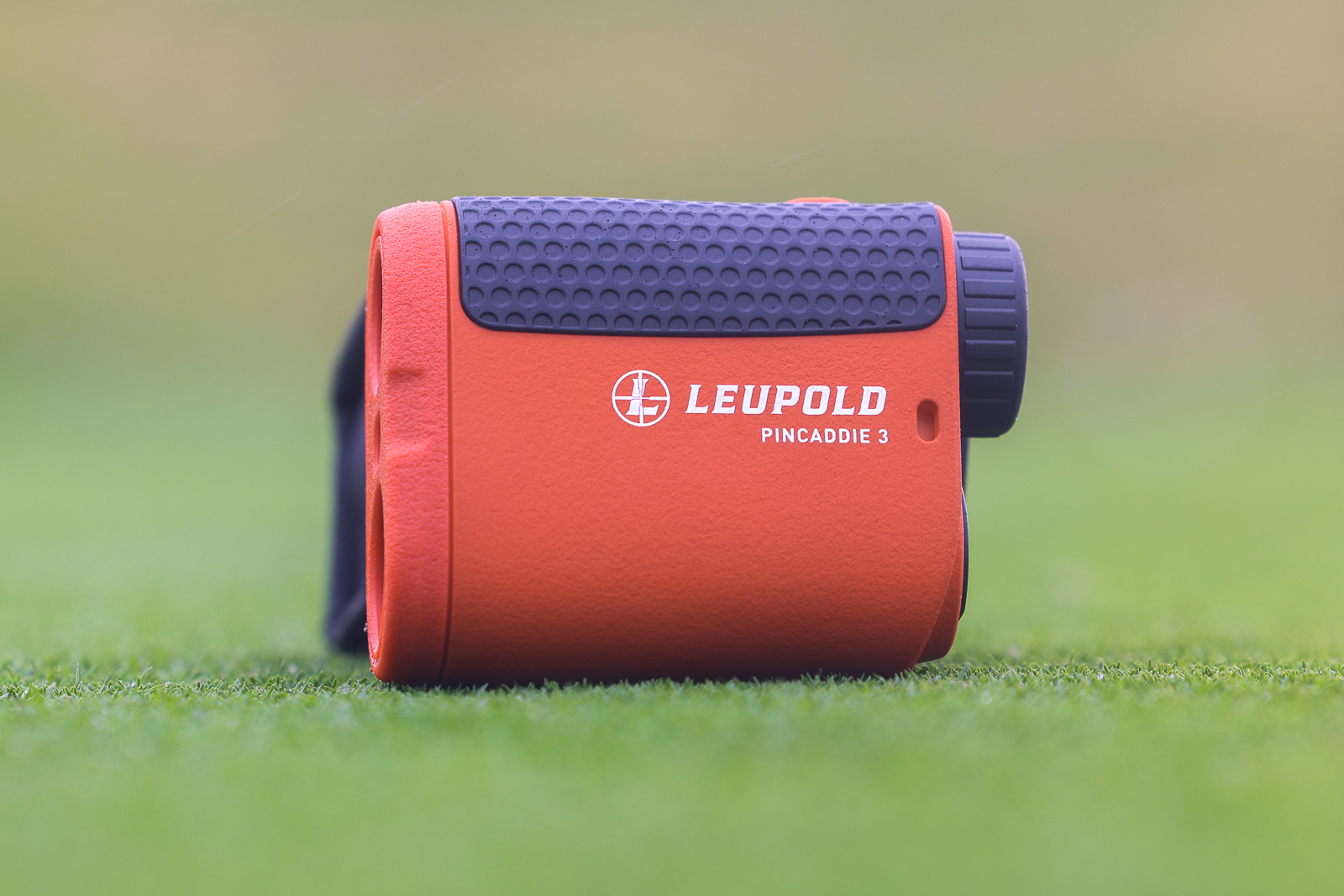
Let’s start with the easiest one to differentiate, which also happens to be the most inexpensive: the PinCaddie 3.
This is a unique rangefinder in golf, because it’s one of, if not the only rangefinder under $200 from a truly premier optics company.
Products like the TecTecTec KLYR are solid and have more features, but the name, reliability, and laser-quality aren’t on par with Leupold.
The PinCaddie 3 is also the cheapest rangefinder I know of to be fully waterproof. I haven’t been able to find an IP waterproof rating for any Leupold devices, and I have a message into them about it. But they claim it’s “waterproof” rather than water resistant, which makes me think it’s an IPX7 rating. If so, this is usually only found in devices that are twice the price and is a great feature.
It also features Leupold’s Fog Mode, and I’ve found it to work very well. Maybe not quite as well as it does in the more expensive GX models, but this is among the most accurate budget rangefinders we’ve tested.
The design feels a bit dated, similar to older Blue Tees and Precision Pro Models (which they honestly probably modeled after this series from Leupold), but the display is far superior.
The optics are the best I’ve seen in a sub $200 rangefinder, and I love the fact that the display is clean. You get the center reticle and the distance that’s it.
So if you just want to get accurate distances in a comfortable and very well-built device from a reputable brand? Look no further than the PinCaddie 3.
One thing to note, the device is called the “PinCaddie 3” but the laser technology it uses is the “Pin Hunter 2” which is the older Leupold tech. All other current models use “Pin Hunter 3”. This doesn’t seem to have a huge impact on accuracy, but the PinCaddie 3 is noticeably slower than other models.
At $170 on Amazon this is a heck of a deal. It doesn't have the features of some other models. It's not as fast as others. But if you want an accurate, reliable rangefinder from a very reputable brand? This is the one to go for.
Leupold GX-2c Rangefinder: $329
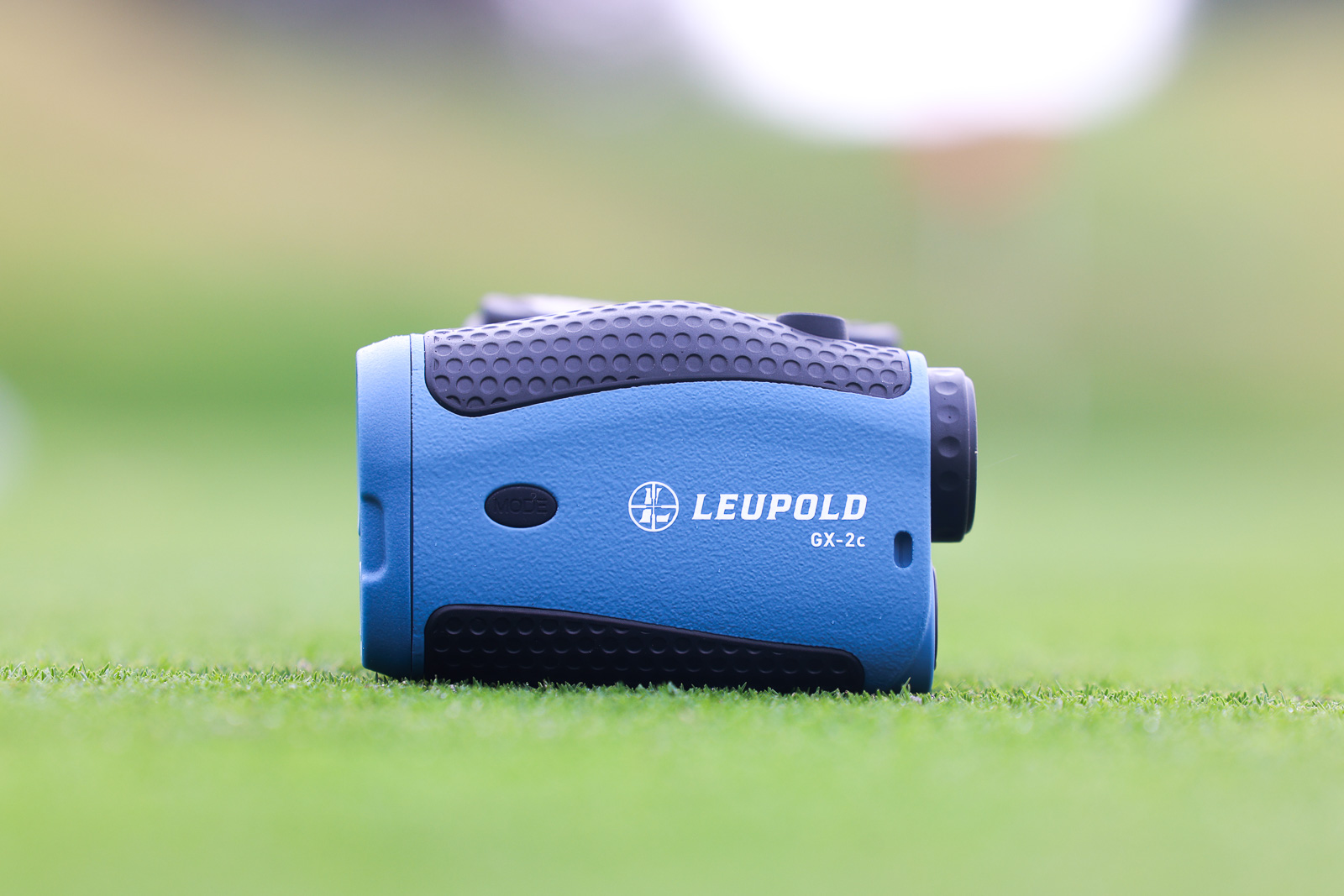
The Leupold GX-2c is in my mind the wild card of the Leupold lineup.
The PinCaddie we just mentioned is in its own category.
The GX-3, 5, and 6 – are each very similar to each other with some obvious differences we’ll touch on below.
But the GX-2c feels very different than all of those.
First off, it looks different.
All of the other devices in the GX series look almost identical.
But the GX-2c is a cool blue color with a little bit of a sweeping hump over the top.
What’s cool about this is they put some of their best technology into the rangefinder, but kept the price over $100 cheaper than the next model up.
It’s got their TGR slope technology which, again, takes altitude and temperature into consideration – which is to my knowledge, the cheapest device on the market to do this.
It has Prism Lock, Flag Lock, DNA, Pin Hunter 3, and it’s also the cheapest Leupold model to include the “Club Selector” feature.
If you’re golf minimalist who wants as little as possible on the course, but you like the data some of the newest tech can provide, then the Club Selector feature could be great for you. It doesn’t require to wear a GPS golf watch or use a set of swing analyzers – which for the right person is great.
The GX-2c is waterproof as well.
So while it doesn’t have a magnet or vibration feature, it has a bunch of features that other similarly priced products don’t have. So if again if you’re looking for a mid-priced rangefinder with great build quality and laser technology – this is a solid choice.
This comes with most of the tech from the more expensive GX models, and is probably the best "bang for the buck" value in the Leupold Golf lineup.
Leupold GX-3c: $449
When you hit the Leupold GX-3c and up, it can be a little bit more difficult to determine the differences in each model.
For starters, the 3 and 5 look identical. The 6 has very slight aesthetic changes.
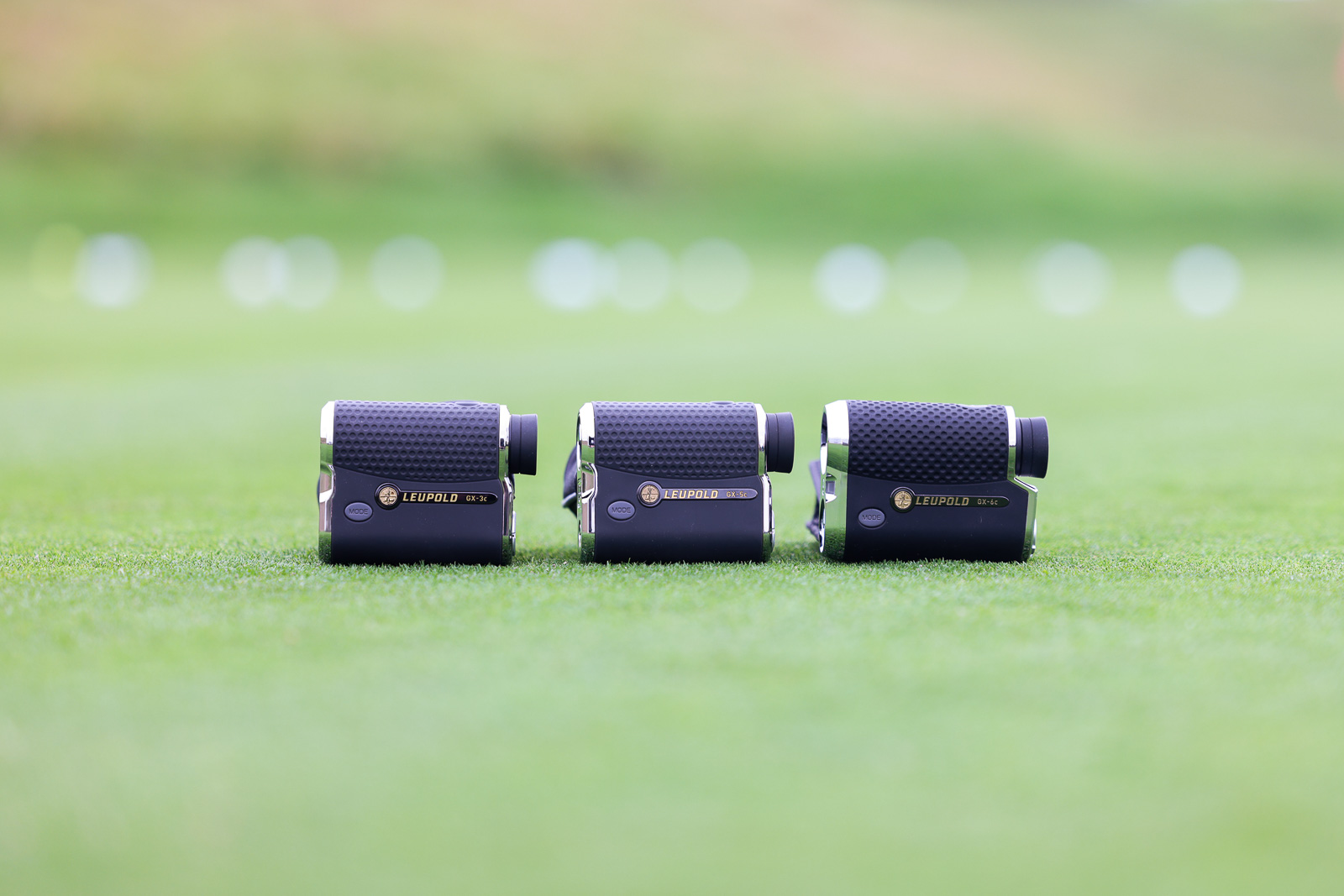
But to make it simple, the Leupold GX-3c is the exact same as the 5c, it just doesn’t have built in slope (or TGR) as they call it.
So in terms of price and features, this would be like comparing the Bushnell V5 (no slope) with the Bushnell V5 Shift (has slope).
The GX-3c and above are when the Leupold devices really start feeling high-end.
All of their models are much more compact than similar models from competing brands. These are much smaller than say the Bushnell Pro X3 or the Cobalt Q6. So if compact size is important to you, any of these models will be great.
The GX-3c gets a big upgrade from the 2 with its bright red digital display. It looks super clear, and has 3 brightness settings to help you dial it into your preference. Doing so isn’t quite as convenient as it is on the class-leading Cobalt Q6, nor do you have the option of a black display (I don’t think), but for most practical purposes? You can set it once and never think about it again.
This device is really built for the tournament golfer. Because it doesn’t have built-in slope, you never have to worry about it being tournament legal, you’re always good to go.
One surprisingly nice feature in the GX series of rangefinders is you can customize the reticle to your preference. There are over half a dozen options from a simple circle to some more elaborate ones – which I love. It can make ranging distances to flags, and specifically other hazards, even easier. It’s the only brand I’ve seen that does this.
You’ll get the visual flag lock around the reticle when it finds a pin, and you can set it to audibly beep as well.
So if you’re a tournament player who is carrying their bag and you want an extremely fast, accurate, and compact rangefinder? Look no further.
Everything in the more expensive GX-5C minus slope. This makes it the ultimate "Players Rangefinder" for tournament players who don't need or want slope adjustments.
Leupold GX-5c: $499
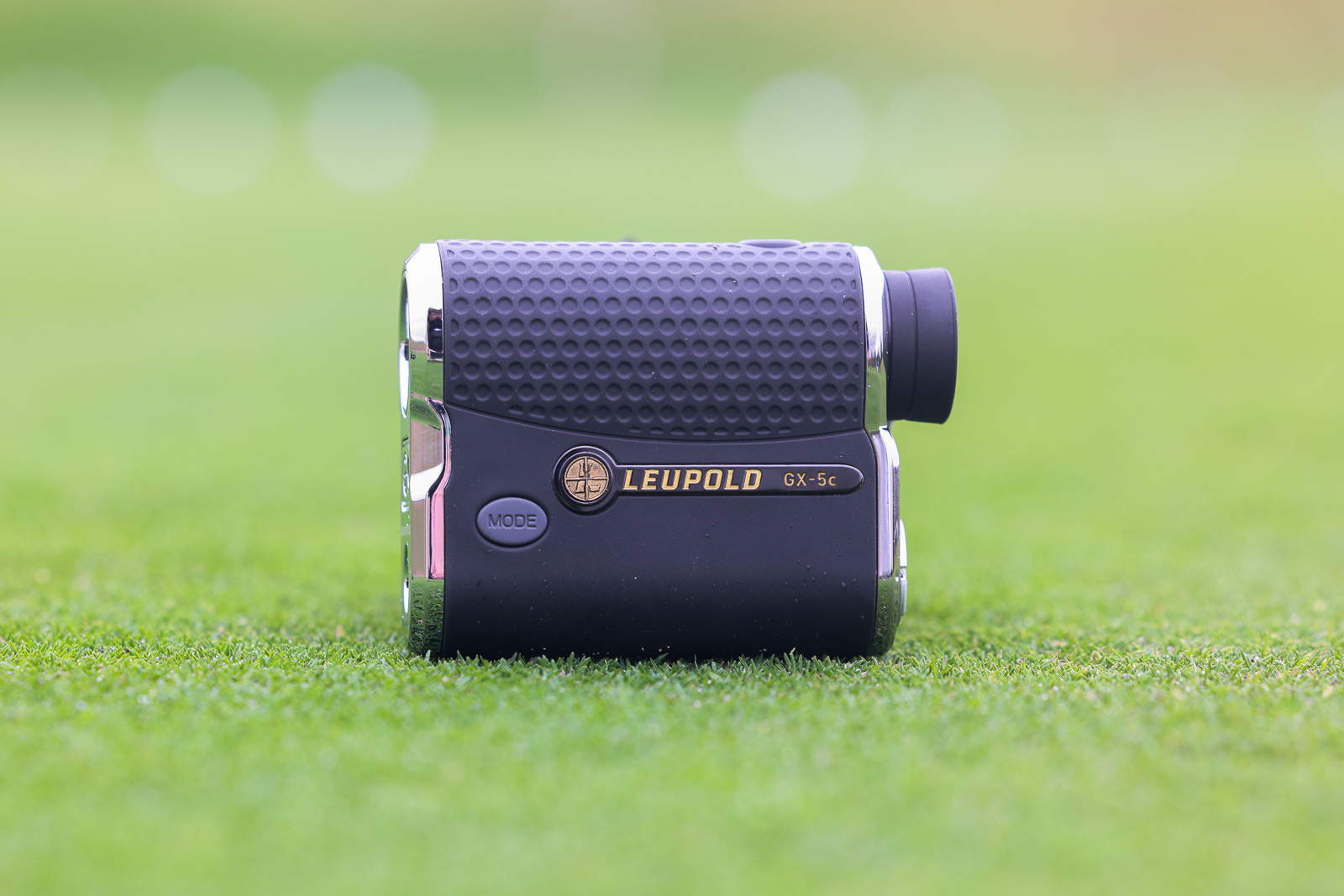
The Leupold GX-5c has all of the same wonderful features as the 3 I just mentioned. It literally has every piece of technology that Leupold offers, save for the image stabilization found on the GX-6c.
One odd thing to note, the GX-5c I received came with a battery that was only half full. Not sure what’s up, but I know Leupold support would happily replace it right away. I just happened to have about a dozen rangefinder batteries laying around, so I switched it out with no problem.
The optics and red display on the 5C are fantastic.
My one critique is more of a personal preference thing. I’ve mentioned in the past that I like a very clean display. I don’t need the text to be super huge. I like a small reticle in the center, a clear distance, and as little extra information as possible.
In the 5C when you have TGR (slope) enabled you get both the adjusted distance and the actual distance one on top of the other on either side of the reticle – and it takes up nearly the entire display.
This makes it super easy and clear to see the distances, but if you’re trying to hit multiple targets and move it around, it can block your view a bit and make doing so a little more challenging.
This isn’t a factor on the 3 since it doesn’t have slope, and the 6 has a display that’s been redesigned a bit and isn’t as big.
Again, personal preference, but I didn’t love that.
Otherwise, everything about this rangefinder is world-class. From build quality, accuracy, features, etc.
This is a top-of-the-line device that will last you for years to come.
This Leupold Golf rangefinder has just about everything you could ask for, sans image stabilization. Super reliable and incredibly accurate.
Leupold GX-6c: $599
For any other brand, the 5C would be its flagship product.
But Leupold took things a step further with the GX-6C.
It looks very similar to the 3 and the 5, with just some very subtle cosmetic changes that most people won’t even notice unless taking a very close side-by-side look.
As expected, the GX-6C has all of the Leupold technology we’ve covered in the other products, and one more big one: image stabilization.
The only other image-stabilized rangefinder I’ve used is the Nikon Coolshot Pro II Stabilized.
If you’ve never used one, it really is pretty wild. As you’re scanning your shot, and you stop at the flag and hit the range button, you’ll literally watch the viewfinder freeze up and lock onto the flag.
It’s a cool piece of tech and works very well. The stabilization on the Leupold feels almost identical to the Nikon model.
I honestly don’t think most people need stabilization. Leupold has done such a good job with their Flag Lock and Prism Lock technology that getting it to find and lock onto the flag really isn’t that difficult – even at distances of 250 to 300+ yards.
That said, if you’re telling me I can either have it or not have it? I’ll take it all day long.
Leupold made some small changes to the display in the GX-6x which in my opinion are a very welcome upgrade from the 5c. I just mentioned my issues with the display feeling a bit too big in that device when slope is turned on, and this is much less of an issue with the 6.
Incredibly well built, tons of tech, and image stabilization. If you're looking for a top-of-the-line rangefinder that will last for years to come, the GX-6C is a great choice.
Which Leupold Rangefinder Should You Buy?
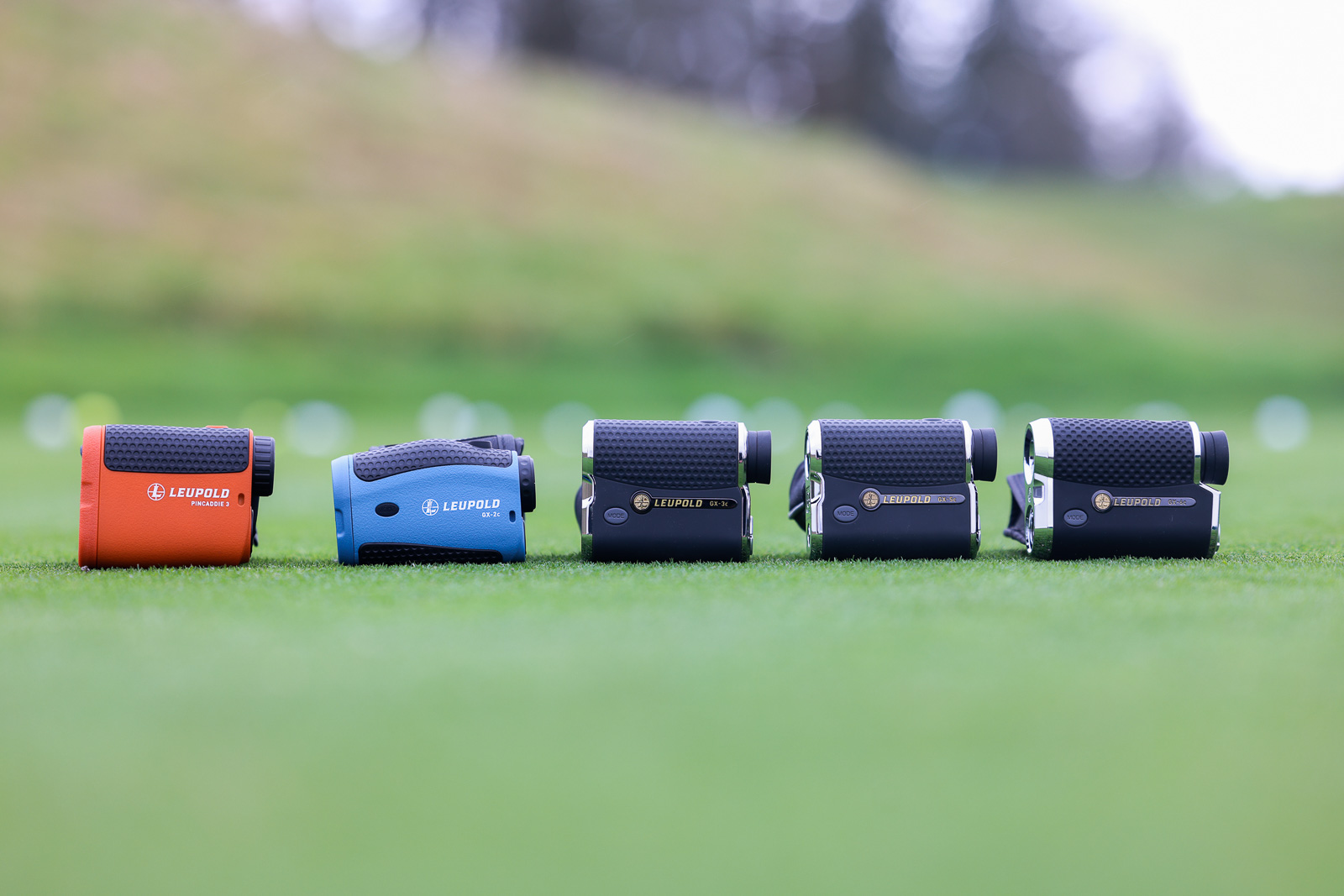
Ok so now that you have an idea of what Leupold rangefinders bring to the table and the differences between each, which one should you buy?
Despite 5 models at various price points, each one really is built for a bit of a different person, so choosing which one is right for you should hopefully be pretty easy.
If you’re on a budget and you just want an inexpensive rangefinder that will actually work from a very reputable brand? Simple, buy the PinCaddie 3. There are other models out there that have more features at the same price point, but in terms of reliability and simple yardages, this is the one to go with.
If you want the latest technology, great build quality, don’t care about a backlit screen, and want most of the Leupold tech without breaking the bank? Get the GX-2c. It’s safe to say that this the best value, or the best bang-for-your-buck in the Leupold lineup.
If you’re a tournament player that doesn’t care about slope calculations? Get the GX-3c. This has the incredible form factor and display of the highest-end models, and because there is no slope, the display size isn’t an issue in this model. I’d call this the ultimate “Players Rangefinder” on the market today.
If you want it all but don’t care about image stabilization? Get the GX-5c. I made comments about the display not being to my personal tastes, but it’s a minor gripe. As this performs great and has just about all the tech you could want packed into it.
If you want the best of the best? Buy the GX-6c. The Leupold GX-6c truly is among the best rangefinders I’ve ever tested. It’s the same price as a Bushnell Pro X3 and a Garmin Z82. But each of these really focus on a different segment of the market who value different things. The image stabilization, fog mode, compact size, and enhanced laser tech in the Leupold are what make it stand out among other premium-priced models.
A Few Downsides to a Leupold Golf Rangefinder
Considering this is a buying guide, I do think it’s important that I point out a few of the downsides to buying a Leupold device. Every brand has some, and I just wanted to highlight a few things I’ve noticed here.
Some of these aren’t even necessarily downsides, more just things to be aware of.
Darker Optics
Compared to many other brands, I’ve found that Leupold glass across the board is just a little bit darker than most competitors. It almost feels like they’re polarized or have some slight tint to them. This is a positive in bright sunlight, but if you’re playing in mediocre weather or overcast, it can feel a bit dark.
That said, the “Fog Mode’ included across all of their devices is made specifically for this type of weather, and there are zero issues getting distances because of this.
Field of view
I think this comes down to magnification. Some rangefinders feel like they have a bigger field of view or bigger display when you look through them. All of the Leupold rangefinders feel like they’re on the smaller side of this.
I think this is because they all feature 6x magnification, whereas some other products use 7x. I tend to prefer the increased magnification, but again, personal preference.
Switching TGR (Slope) On and Off
Many modern rangefinders have very clear and very easy switches on the device itself to turn slope mode on and off. With all TGR-enabled Leupold rangefinders, the only way to turn this feature on or off is via the menu system in the device.
Once you’ve spent a little bit of time navigating the menus, this isn’t that big of a deal. But it does take a little while to get familiar with using them, and if you’re playing in regular tournaments, you might find this annoying when compared to other products that make it both easy to turn on and off, and very clear when slope is on or off.
Lack of Magnet and Vibration
I mentioned these throughout this review, and they are the two most obvious omissions from Leupold devices. Neither of these really have any effect on the accuracy of your device. The visual and audio flag lock notifications work great.
And in the case of say the Precision Pro NX10 which vibrates every time you get any distance, not necessarily just when you lock on a flag, the vibrations in some devices can be a little misleading.
But if you’re a regular cart user who likes a magnet, or you’re a tactile person who needs the buzz – you won’t find that here.
Leupold Golf Pricing: Check Amazon!
Leupold devices are generally on the higher end of the golf rangefinder market when it comes to retail prices.
The $599 price point of the Gx-6c places it right at the top of the market with the premier products from Bushnell and Garmin.
But if you’re considering buying any Leupold device, check Amazon!
As of this writing in January 2024, each of the 5 Leupold rangefinders are selling for much less than their MSRP – which makes them a solid value in the world of golf rangefinders.
Final Thoughts on Leupold Golf Rangefinders

I’ve found that when I’m in a group and someone has a Leupold Rangefinder, they automatically become the person everyone goes to for distances.
Leupold Golf’s reputation is among the best, if not the best in the business.
I’ve rarely, if ever, heard from someone who hasn’t been happy with their Leupold.
I can’t say that for any other brand.
Sure, part of this is because Leupold flies more under the radar and I come across fewer people that use them. But regardless, there’s no denying Leupold is in the very top-tier of golf optics brands, and I don’t see that changing any time soon.
Now that I’ve had a chance to use all of their products, I get it.
While a Leupold device won’t be right for every type of golfer, for a certain person, there’s likely no other choice.
Have more questions about which Leupold golf rangefinder you should buy, or how it compares to another product on the market? Drop a comment and let me know!
This page contains affiliate links. This means that if you click a link and buy one of the products on this page, we may receive a commission (at no extra cost to you!) This doesn’t affect our opinions or our reviews. Everything we do is to benefit you as the reader, so all of our reviews are as honest and unbiased as possible.

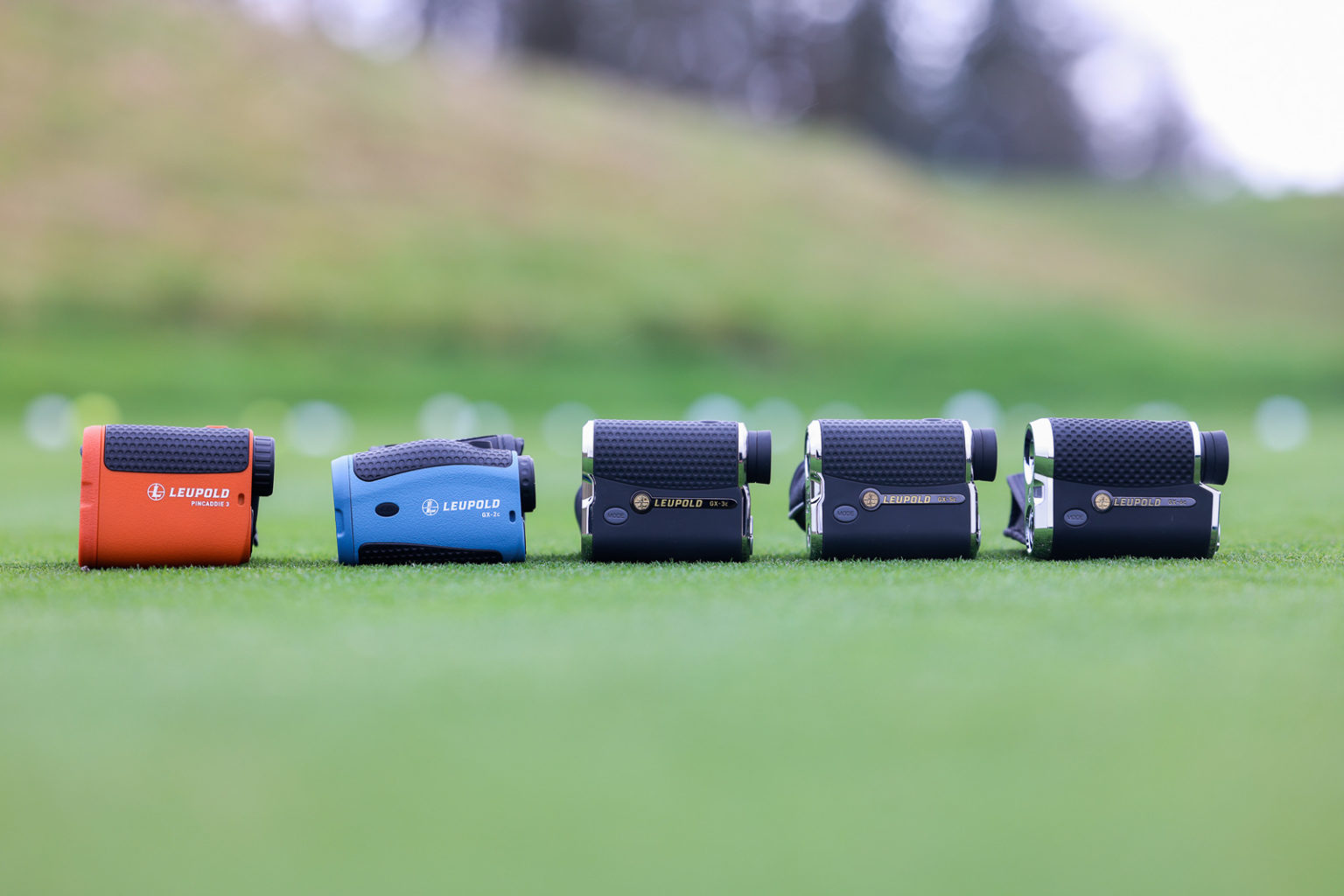
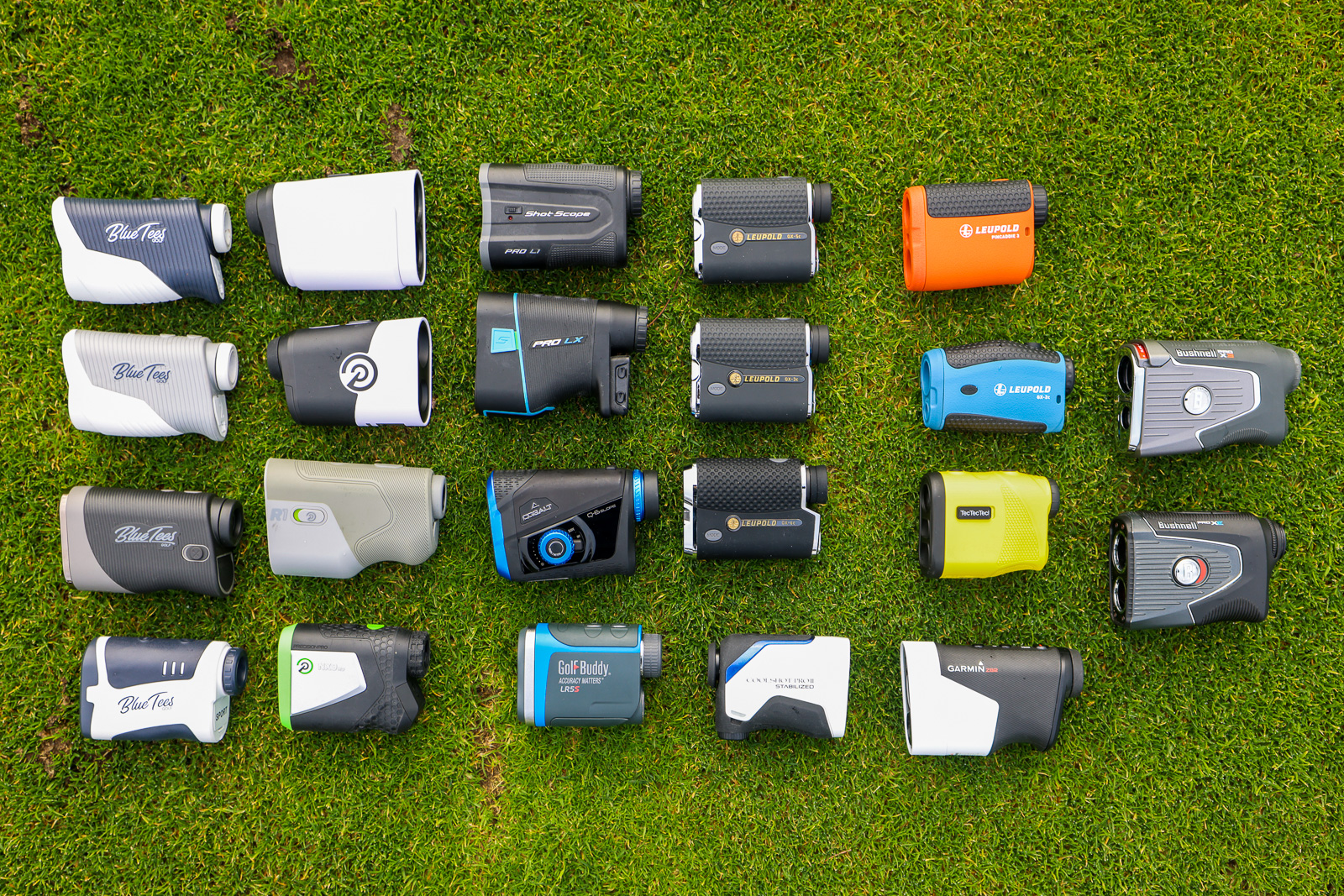


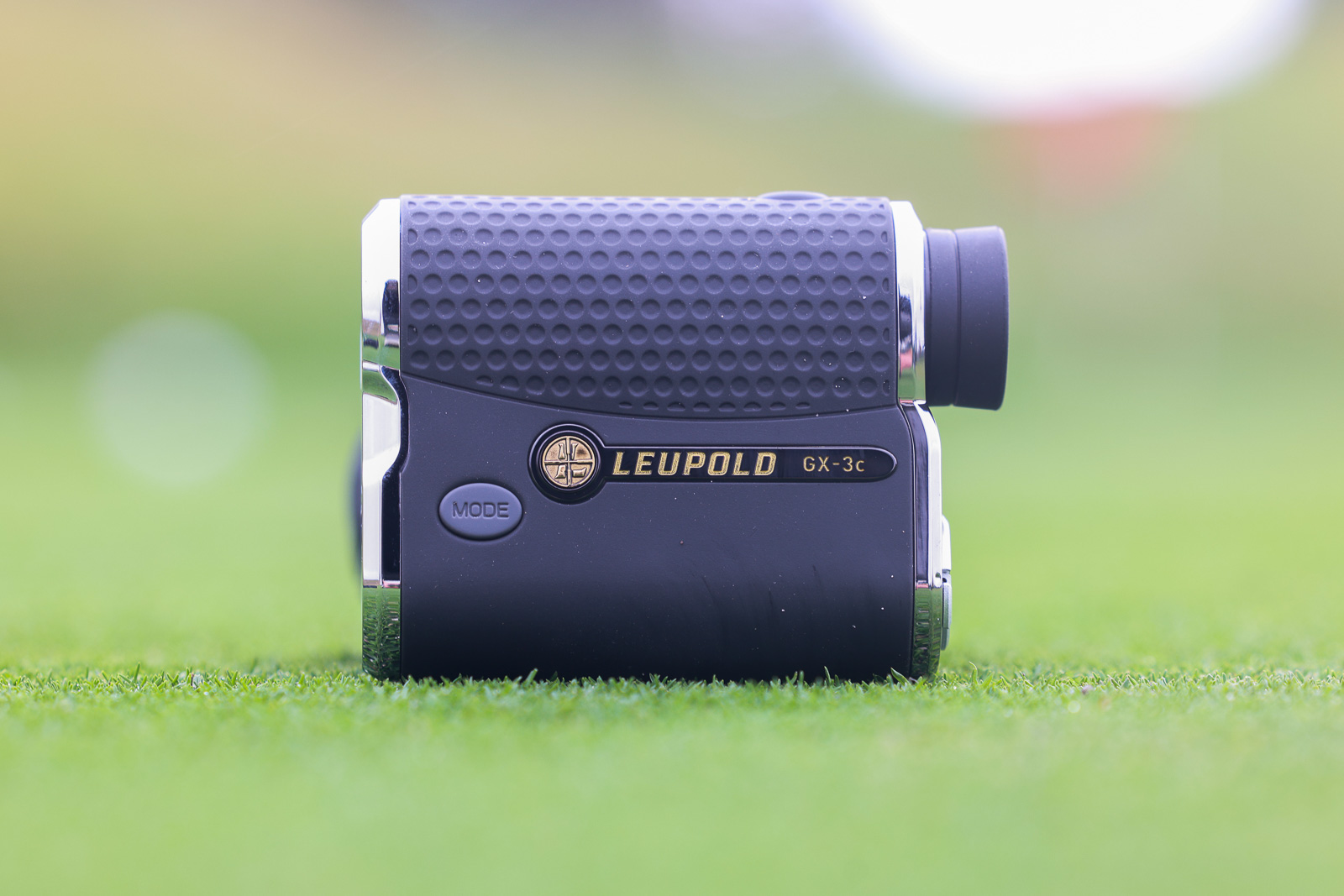


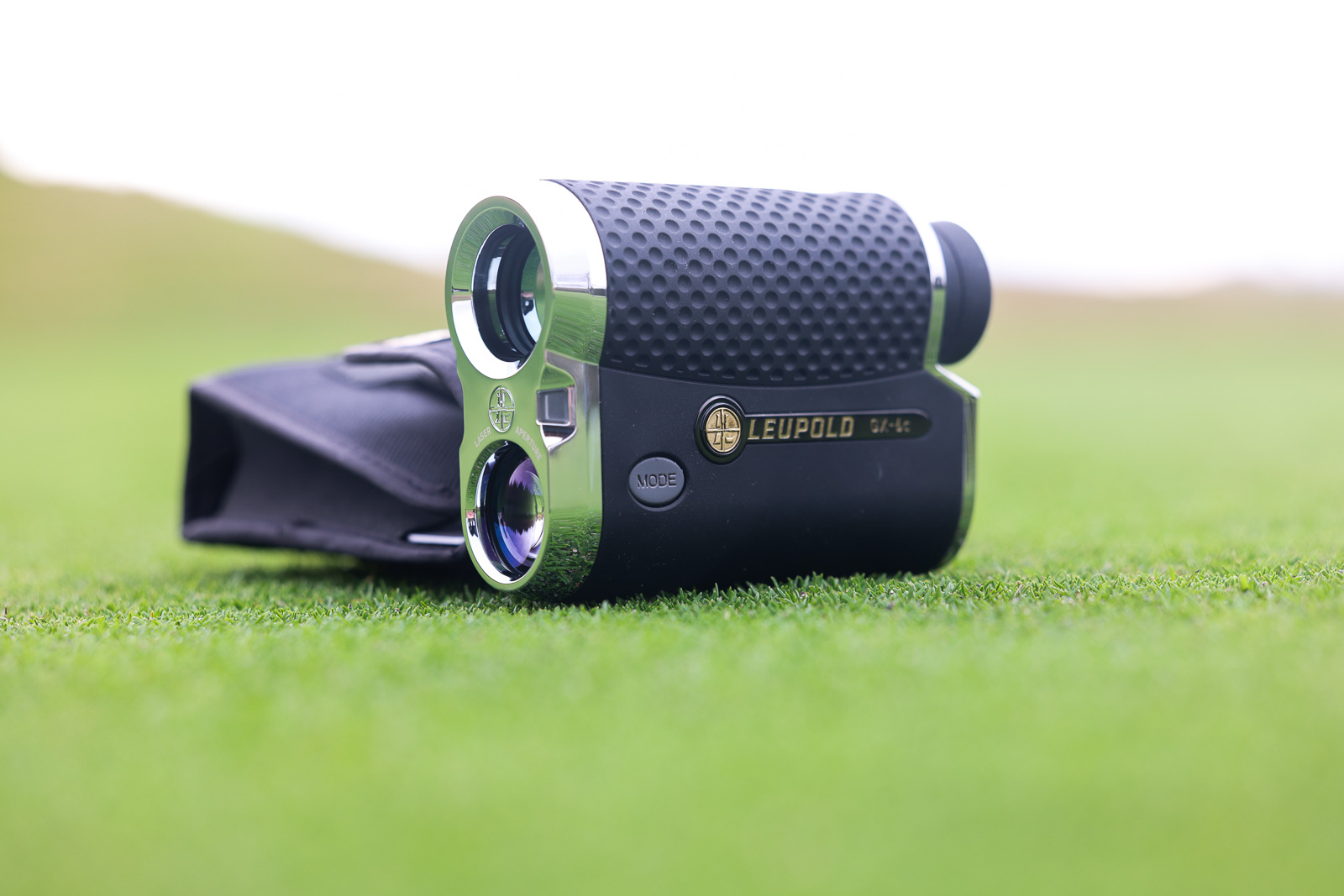

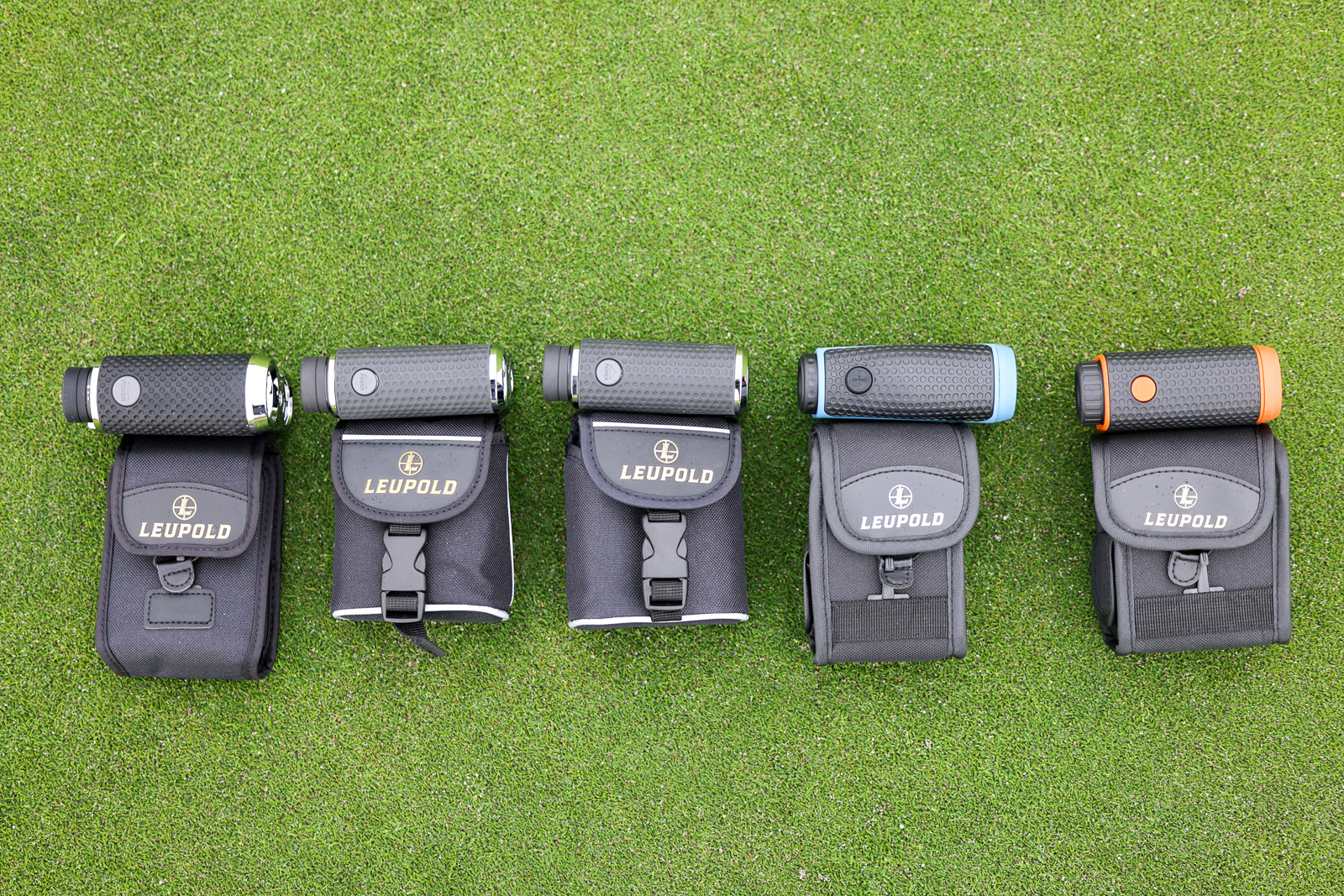
1 Comment
So the $500-600 question…. Bushnell or Leupold?